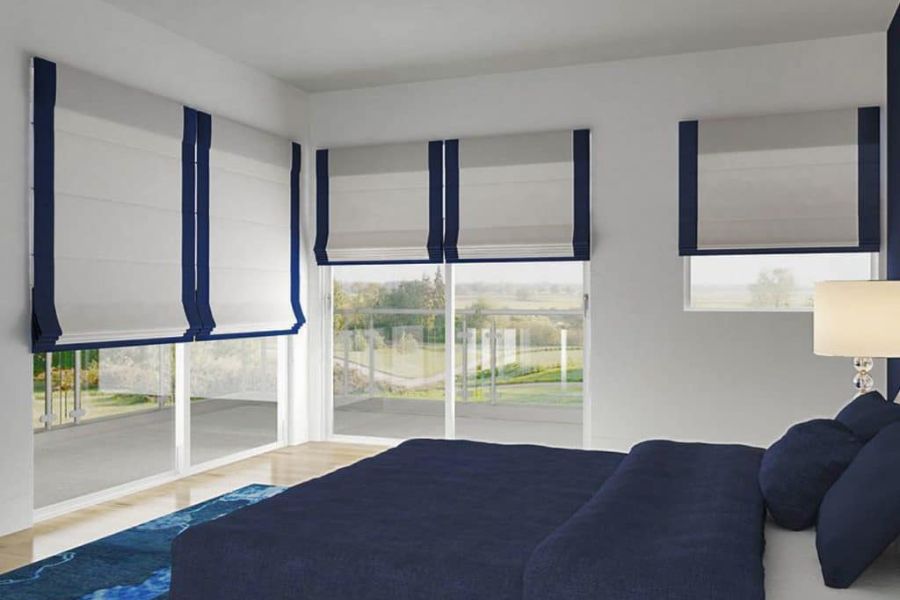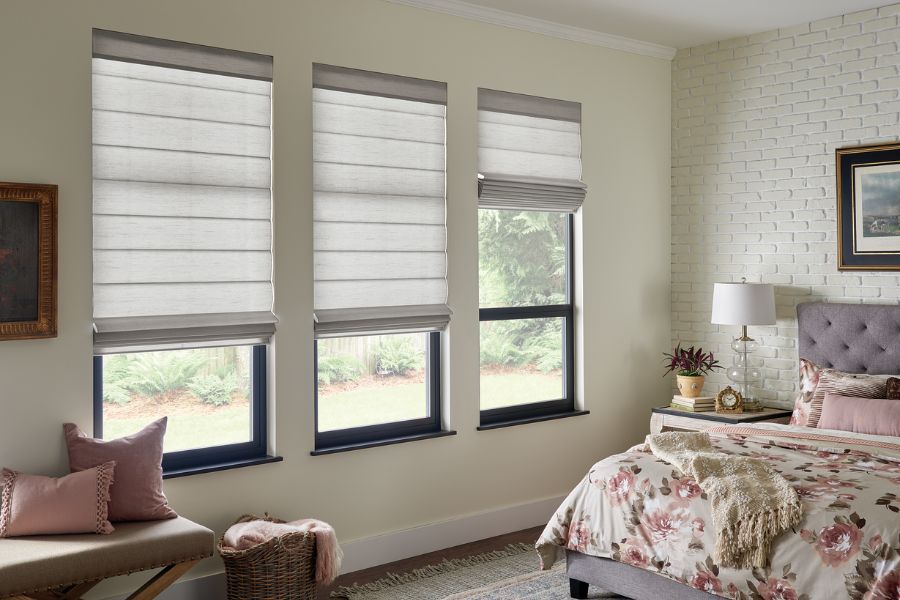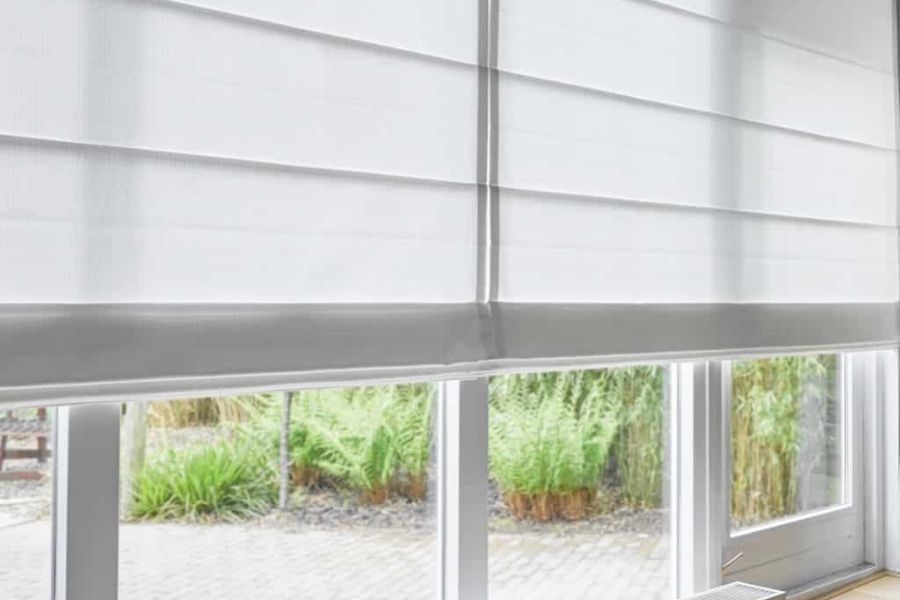Key Takeaways
- Curtains and drapes share similarities in their wide range of customizable options, including fabric types, sizes, colors, and installation methods like rods or rings.
- The key difference between drapes vs curtains lies in material, length, function, and maintenance, offering distinct benefits and costs based on design and fabric choices.
- Drapes block light and provide insulation, while curtains allow light and airflow — but which is right for you? Scroll down to know more!
Drapes vs Curtains: What Are The Similarities?
Drapes vs Curtains: Both are available in a wide range of pre-made or customizable sizes, fabrics, patterns, and colors, offering versatility in design and functionality. They can be hung from various rods, using rings, grommets, a valance, or a fabric sleeve, providing flexible installation options.
Both curtains and drapes can be lined with blackout fabric for enhanced light control or insulation to improve energy efficiency. If the fabric used is opaque, both curtains and drapes provide the same level of privacy when closed.
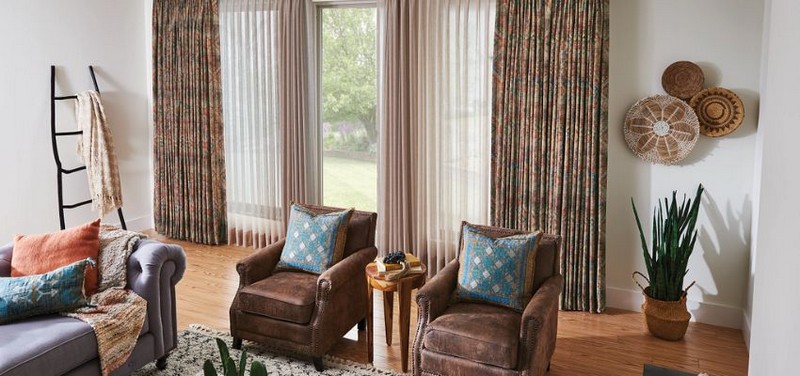
Functionally, curtains and drapes operate in much the same way. They are often sold in pairs of panels that open from the center, a style known as split-draw. Alternatively, depending on the direction, they can be designed as a single panel that opens from the right or left, referred to as right-draw or left-draw.
Some homeowners may prefer a stationary drape or curtain, which does not open or close but serves as a decorative element. These stationary treatments can frame the window or complement existing blinds or shades.
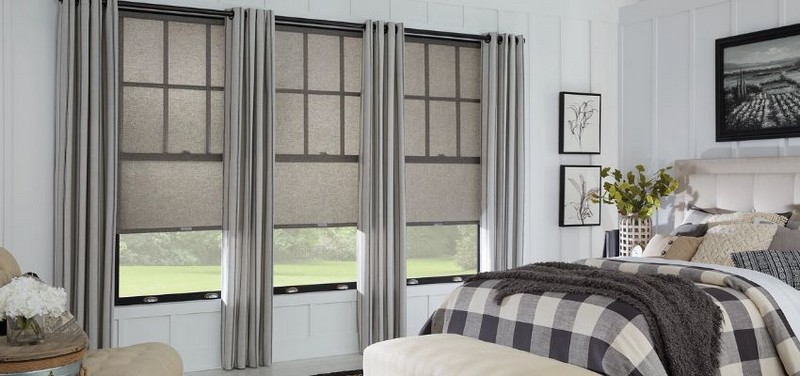
Drapes vs Curtains: What Are The Differences?
Curtains and drapes are popular window treatments, but what is the difference between curtains and drapes? This guide explains the significant differences so you can choose the best solution for your home.
Fabric
One key difference between drapes and curtains is the type of material used. Drapes are typically crafted from heavier fabrics like velvet, silk, or damask and often include a lining. This combination adds a formal, luxurious feel to a room, providing extra insulation and light-blocking capabilities. These qualities make drapes ideal for formal dining rooms, living rooms, or bedrooms. Drapes come in various styles, including pleated, solid, textured, or patterned designs.
In contrast, curtains are usually made from lighter, sheer fabrics such as linen, polyester, cotton, or gauze. These materials create a more casual, relaxed ambiance, making them perfect for kitchens, bathrooms, or family rooms where increased airflow and natural light are preferred.
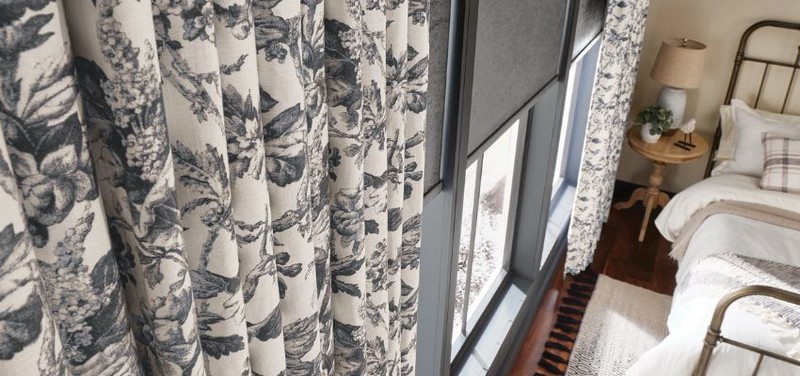
Explore more: Top Curtain Styles And Ideas For Beautiful Bay Windows
Length and Fullness
One difference between curtains and drapes lies in their length and fullness. Drapes are usually floor-length or longer, often pooling on the floor for an elegant, flowing appearance that enhances light blockage and insulation.
Conversely, curtains typically cover windows up to the sill or extend slightly below it. This shorter, less voluminous style adds a casual, airy feel to the room, allowing more light and air to enter. However, curtains can also be floor-length if preferred, offering flexibility in their use.

Functionality
The critical difference between drapes vs curtains lies in their distinct purposes, determined by varying designs and materials. Drapes excel in privacy, light blocking, and noise reduction due to their heavier fabric and lining. This makes them ideal for bedrooms or meeting rooms, as they minimize gaps for light and air.
On the other hand, curtains are perfect for rooms where natural light and a light breeze are desired. Their lighter fabric allows more natural light and air to filter through, making them suitable for spaces where brightness and ventilation are priorities.
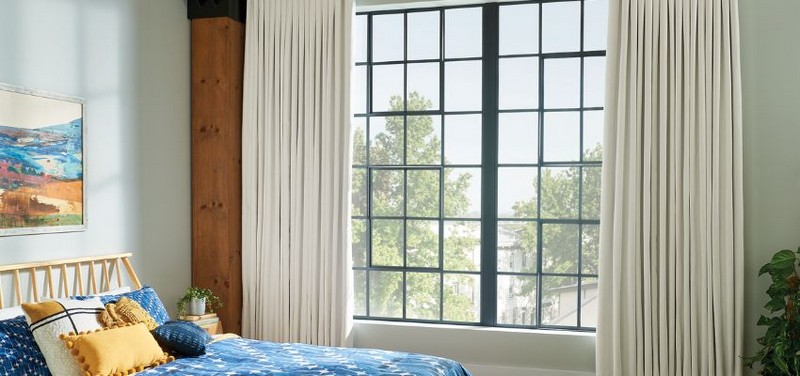
Hanging and Supports
Drapes usually need sturdier rods and brackets to support their weight, length, and fullness, especially for more elaborate, formal styles.
Conversely, curtains require less hardware and can be hung on lightweight cords or tension rods. Curtain rod designs are typically more straightforward and more casual than those used for drapes.

Cleaning and Maintenance
Cleaning and maintaining curtains vs drapes can differ significantly. With their heavier fabric and linings, dresses often require professional cleaning or dry-cleaning, making them more costly and high-maintenance. Even when cleaned at home, drapes are challenging to remove from the rod. They also require more space in the washer and dryer, increasing soap, water, and energy use.
In contrast, curtains are more accessible to remove for cleaning and contribute to a lighter laundry load than drapes. This makes curtains more environmentally friendly and can help save on utility costs.

Insulation
Despite often being used interchangeably, drapes vs curtains offer distinct approaches to temperature regulation. Often lighter and unlined, Curtains are ideal for filtering sunlight and creating a soft ambiance in a room. Their light colors and breathable fabrics can help reflect heat and keep areas cooler throughout the hot months.
Conversely, drapes are typically heavier, lined, and made from thicker fabrics. This construction makes them excellent insulators, effectively trapping heat indoors during colder months. Their ability to block out drafts and prevent heat loss can significantly contribute to maintaining a comfortable indoor temperature during winter.

Light Control
Curtains are often chosen for their light-filtering capabilities. Light can pass through sheer curtains, but medium-weight or layered curtains provide soft light diffusion. Their primary role is aesthetic, softening incoming light to create a warm atmosphere.
Drapes, however, are designed for maximum light blockage. Drapes are perfect for spaces where total darkness is wanted, including bedrooms or home theatres. They are often made of thicker materials and have blackout linings.

Cost
Drapes typically cost more than curtains due to several factors. Drapes tend to be made with more expensive fabrics and often include linings, which increase their overall price. Additionally, drapes are designed to be fuller and more prolonged, requiring more fabric per panel than curtains.
Curtains, on the other hand, are generally more budget-friendly. They use less fabric and often come in simpler designs, contributing to their lower cost.
However, both drapes vs curtains can vary significantly in price depending on the specific fabrics chosen. Both alternatives can be found at lower costs by taking advantage of sales or discounts.
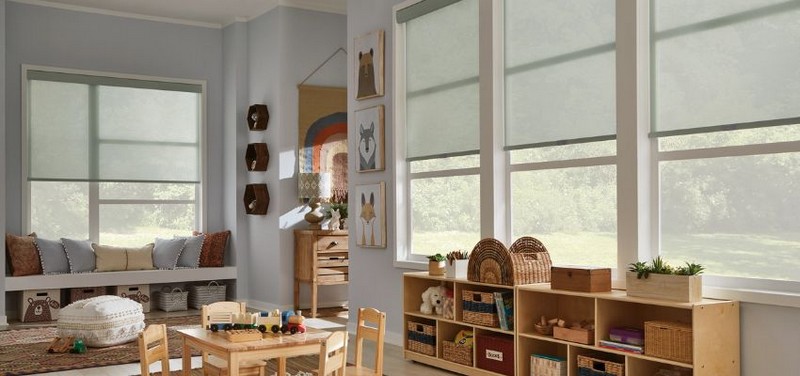
You might want to know: What Makes Artisan Drapery Different From Regular Curtains?
Drapes vs Curtains: Which Window Covering Should You Choose?
When choosing between window drapes vs curtains, keep in mind they are nearly interchangeable. Your decision should be based on what works best for your space. Due to their heavier fabric and longer length, drapes provide better light blackout, noise reduction, and insulation. They cover the window more effectively than curtains, minimizing gaps for light and air.
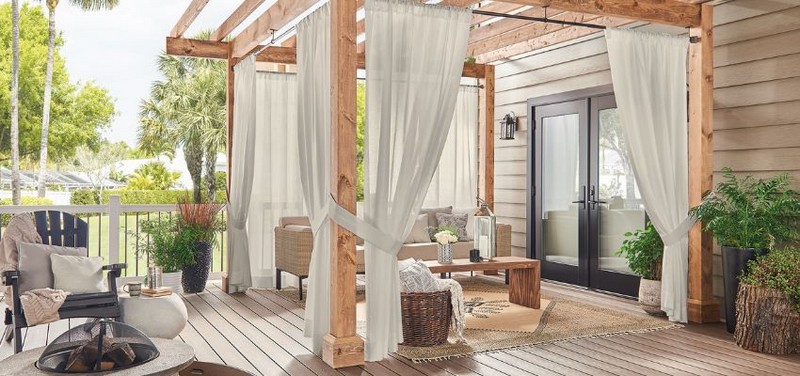
Curtains are generally more affordable, making them a good choice for budget-conscious projects. They are also easier to clean, lighter, and smaller, which can benefit households with children or pets.
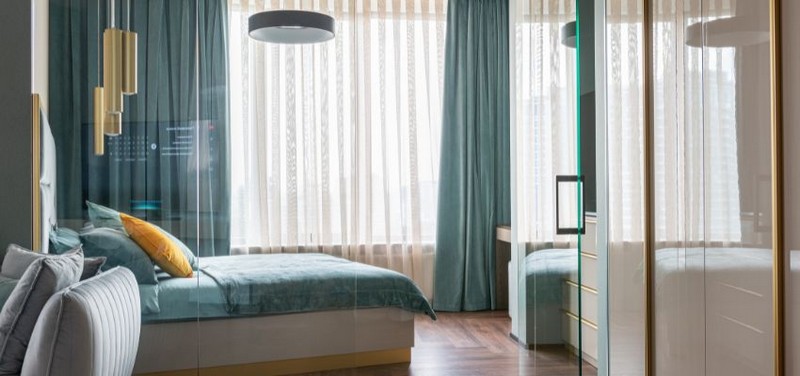
Ultimately, your selection between drapes vs curtains depends on your functionality, cost, and style priorities. But if you’re unsure what’s the difference between curtains and drapes, feel free to contact us for a complimentary in-home consultation and quote with one of our experts at Creative Windows. We’ll help you determine the perfect window treatment to match your needs and preferences.


